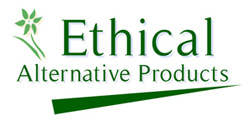Combination Antioxidant Therapy May Help Fatty Liver
![]() November 7, 2011 (National Harbor/Washington, DC) — A combination of vitamin E and alpha lipoic acid (ALA) can improve the inflammatory and steatosis scores in patients with nonalcoholic fatty liver disease or nonalcoholic steatohepatitis, according to the results of a study presented here at the American College of Gastroenterology 2011 Annual Scientific Meeting and Postgraduate Course.
November 7, 2011 (National Harbor/Washington, DC) — A combination of vitamin E and alpha lipoic acid (ALA) can improve the inflammatory and steatosis scores in patients with nonalcoholic fatty liver disease or nonalcoholic steatohepatitis, according to the results of a study presented here at the American College of Gastroenterology 2011 Annual Scientific Meeting and Postgraduate Course.
Researchers sought to examine the effects of antioxidant combination therapy on patients with nonalcoholic fatty liver disease. Inflammation and steatosis scores improved from baseline to 6 months in patients receiving the antioxidants, compared with placebo. Compared with placebo, combination therapy resulted in a 70% difference in change in tumor necrosis factors-alpha levels from baseline.
ALA alone or vitamin E alone were not as effective. Findings revealed a 47% difference in change between ALA monotherapy and placebo and a 49% difference in change between vitamin E monotherapy and placebo.
“ALA and vitamin E should be considered as therapy in patients with nonalcoholic fatty liver disease and nonalcoholic steatohepatitis to reduce inflammation and the profibrogenic effect on the liver to preclude end-stage liver disease and hepatocellular carcinoma,” said P. Patrick Basu, MD, MRCP, AGAF, FACG, assistant clinical professor of medicine at Columbia University College of Physicians & Surgeons in New York City, clinical professor at Hofstra University Medical School, and division chief of the Department of Gastroenterology and Gastrointestinal Endoscopy at North Shore University Hospital in Hempstead, New York.
Nonalcoholic fatty liver disease is the most common liver disease in the world, and a global epidemic, Dr. Basu noted. In the United States, 20% of the general population and 75% to 92% of the morbidly obese population suffer from the disease. In the disease, excess carbohydrates and lipids can affect metabolic pathways, increasing fatty acid levels in the liver, which can lead to liver damage, according to Dr. Basu.
Factors linked to nonalcoholic fatty liver disease include obesity, hyperlipidemia, and inflammation. The disease spectrum associated with it ranges from simple steatosis to nonalcoholic steatohepatitis, cirrhosis associated with nonalcoholic fatty liver disease, and end-stage liver disease.
This study builds on earlier studies that tied individual antioxidant treatments, such as vitamin E and ALA, to improved liver pathology and diagnostic end points. Dr. Basu chose ALA because of its panantioxidant effect, he said.
The trial was a randomized, placebo-controlled, open-label, prospective clinical trial that involved 155 patients with nonalcoholic fatty liver disease or nonalcoholic steatohepatitis and a body mass index from 28 to 33 kg/m². Patients were excluded from the study if they had diabetes, hepatitis B, hepatitis C, hypothyroidism, or syndromes with known insulin resistance; consumed more than 30 g of alcohol per day; or took any other medications, including herbs and supplements. The patients followed 1 of 4 daily regimens for 6 months: 300 mg ALA; 700 IU vitamin E; 300 mg ALA + 700 IU vitamin E; or placebo.
Levels of various markers were assessed at baseline and at 6 months. Combination therapy for 6 months reduced triglycerides to reference levels (<160 mg/dL). Compared with placebo, combination therapy also resulted in a 43% difference in change of triglyceride levels from baseline, a 71% difference in change of steatosis scores from baseline, a 51% difference in change of retinol binding protein 4 (RBP4) from baseline, and a 63% difference in change of homeostasis model assessment (HOMA) scores from baseline.
The only scores that remained unchanged with antioxidant combination therapy were fibrosis scores. In all the other cases, the combination of ALA plus vitamin E was more effective than ALA or vitamin E alone.
“In conclusion, no matter what you do, how you squeeze the data, this trial is statistically significant, and this is [using] over-the-counter, very inexpensive drugs,” he told Medscape Medical News. The regimen should have no adverse effects, he added.
The most impressive effects in the study appeared in the group that received vitamin E plus ALA, noted Paul Kwo, MD, FACG, professor of medicine at Indiana University in Indianapolis, who comoderated the liver session at the conference.
Dr. Kwo also predicted a trend toward more combinations of antioxidants and other novel approaches to reduce liver injury through slightly different pathways.
Although many single studies have come out, he expects to see more research on combination therapies in the future. “Nonalcoholic fatty liver disease is a very heterogeneous disorder,” said Dr. Kwo, “so it makes sense that therapies that address different pathways in the mechanism injury might be more beneficial.”
Sandra Yin
American College of Gastroenterology (ACG) 2011 Annual Scientific Meeting and Postgraduate Course: Abstract 38. Presented November 3, 2011.

